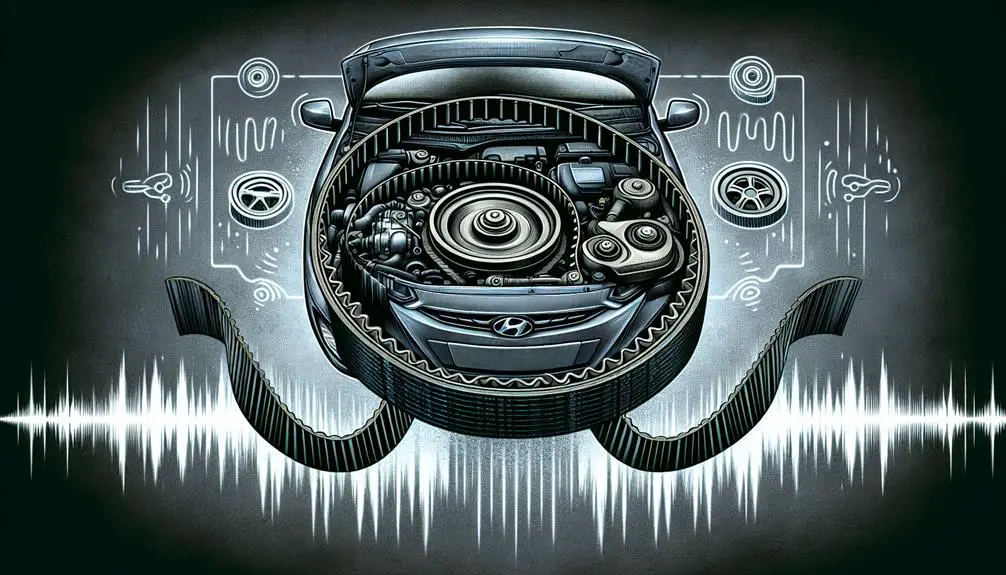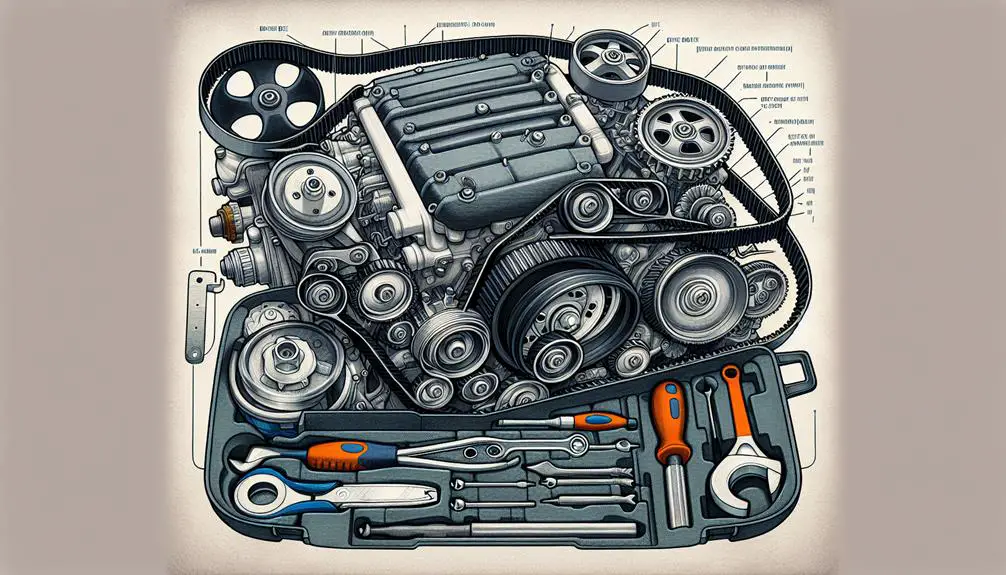Drive belt noise in a Hyundai i30 can be caused by a variety of issues, such as wear and tear, misalignment, or tension issues. The first step in identifying the source of the noise is to visually inspect the belt for any signs of damage or misalignment. If the belt appears to be in good condition, the next step is to check the tension of the belt using a tension gauge. If the tension is too loose or too tight, it can cause noise. Adjusting the tension to the manufacturer's specifications should resolve the issue. If the belt is in good condition and properly tensioned, but the noise persists, it may be necessary to replace the belt altogether. Regular maintenance and inspection of the drive belt can help prevent noise issues and ensure the longevity of the belt.
In conclusion, drive belt noise in a Hyundai i30 can be resolved by visually inspecting the belt, checking and adjusting the tension, and replacing the belt if necessary. Regular maintenance is key to preventing drive belt noise and ensuring optimal performance of the vehicle.
Identifying Drive Belt Noise

Identifying drive belt noise in your Hyundai i30 involves listening for a distinct, high-pitched squeal that usually indicates a belt misalignment or wear. You're probably familiar with the sound—it's impossible to ignore and often becomes more pronounced during startup or when the air conditioning is in use. But it's not just about the noise; it's what the noise signifies. Belt tension plays a vital role here. Proper tension guarantees smooth operation, while incorrect tension can lead to that troubling squeal, indicating either too much slack or excessive tightness.
To dissect this further, noise sources associated with the drive belt aren't limited to the belt itself. Pulleys, tensioners, and even the belt's path can contribute to the symphony of sounds emanating from under the hood. Analyzing these components requires a keen ear and a technical mindset. The belt's interaction with pulleys, for instance, should be seamless. Any deviation, and you're in for a cacophony of belt-related noise.
Comprehending these dynamics, you're now equipped to differentiate between normal operational sounds and those signaling a potential issue. Remember, the drive belt is a critical component, and its sounds aren't to be ignored.
Common Causes Explained
Exploring the sources of drive belt noise in your Hyundai i30 sets the stage for delving into the common causes, such as misalignment, wear, and improper tension. Misalignment occurs when the belt doesn't sit correctly on the pulleys, leading to uneven wear and, eventually, a whining or squeaking noise. This misalignment can stem from a loosened pulley or an incorrect installation.
Wear is inevitable over time because of the belt's constant motion and tension. The belt material, typically a durable rubber composite, gradually degrades, losing its flexibility and smooth surface. Cracks, fraying, or glazing on the belt signal significant wear, which can produce a squealing noise as the belt struggles to grip the pulleys.
Improper tension, either too tight or too loose, impacts the belt's performance. A belt that's too tight can cause excessive wear on both the belt and the pulleys, while a belt that's too loose might slip, leading to a squealing noise. The weather impact can't be ignored. Extreme temperatures can affect the belt material, causing it to harden in cold weather or become too soft in hot weather, further exacerbating noise issues.
Step-by-Step Diagnosis

To accurately diagnose drive belt noise in your Hyundai i30, start by visually inspecting the belt for signs of wear, such as cracks or glazing. These visual cues can indicate whether the belt is in need of a replacement or if it's contributing to the noise you're hearing. You'll want to make sure the belt's tension is correctly adjusted; too tight or too loose can both lead to noise and potential damage.
Next, consider the role of engine lubrication in the whole health of the drive belt system. A well-lubricated engine reduces the strain on the belt, ensuring smoother operation and minimizing the chances of noise. Check the oil level and quality, as poor lubrication can lead to increased friction and, subsequently, noise from the belt area.
Effective Repair Solutions
Once you've diagnosed the source of your Hyundai i30's drive belt noise, it's vital to implement the right repair strategy to make lasting solutions. Addressing this issue effectively involves understanding both the mechanical aspects and the materials involved in reducing or eliminating the noise. Here are important steps to take:
- Choose the Right Belt Replacement Options: Not all drive belts are created equal. Opt for high-quality, OEM-spec belts designed specifically for the Hyundai i30. These belts are manufactured to precise tolerances, ensuring a perfect fit and best performance. The material composition of these belts also plays a significant role in noise reduction, offering a smoother operation.
- Install Noise Reduction Materials: Alongside selecting the appropriate belt, incorporating noise reduction materials around the belt system can greatly dampen sound. Materials such as rubberized coatings or specially designed insulating wraps can be applied to components that interact with the drive belt, providing an additional layer of sound dampening.
- Ensure Proper Belt Tension: Incorrect tension, either too tight or too loose, can worsen belt noise. Use a tension gauge to adjust the belt to the manufacturer's recommended tension settings accurately.
- Align Pulleys Correctly: Misaligned pulleys can lead to uneven wear and increased noise. Utilize a laser pulley alignment tool to guarantee that all pulleys are perfectly aligned, minimizing friction and noise generation.
Preventative Maintenance Tips

Regularly inspecting your Hyundai i30's drive belt system for signs of wear and tension inconsistencies can greatly extend its lifespan and prevent noise issues. By understanding the critical role of the belt tensioner adjustment and lubrication techniques, you're taking proactive steps towards maintaining your vehicle's reliability and performance.
To start, the belt tensioner plays a pivotal role in maintaining the correct amount of pressure on the drive belt to prevent slippage and noise. It's important to periodically check this tensioner for proper function and adjust it if necessary. An improperly adjusted tensioner can lead to premature belt wear or failure, which in turn can cause the dreaded drive belt noise. Use a tension gauge to make sure the tension is within the manufacturer's recommended specifications.
Next, lubrication techniques shouldn't be overlooked. While the drive belt itself doesn't require lubrication, the pulleys and tensioner assembly might. Applying a small amount of appropriate lubricant to these components can prevent squeaking or squealing noises that are often misattributed to the drive belt. However, it's essential to use the correct type of lubricant, as some products can degrade rubber components, including the drive belt.
Conclusion
In wrapping up, you've now tackled your Hyundai i30's drive belt noise from identifying its tell-tale signs to grasping common causes.
Through a systematic diagnosis, you've pinpointed the issue, applying effective repair solutions to make certain smooth operation.
Remember, regular inspections and adhering to maintenance tips can greatly prevent future occurrences. By staying proactive, you'll safeguard your vehicle's performance, making that drive belt issues become a thing of the past.
Keep these steps in mind for a quiet, efficient ride.